For most people who think overpopulation is valid, the issue is a genuine concern over sustainability, resources, and the ability for billions of people to live with safety and health on a small planet. But the concern is simply not warranted.
Project Depopulation: Bill Gates Gathers the World’s Top Billionaires
On page 52, it calls for “progress on immunological methods, such as vaccines, to reduce fertility.” Their 1988 Annual Report cites a large grant given to India for “a large anti-fertility vaccine for women.”
Bill Gates and the "Lucifer Trust." Is there a connection?
But even ten years ago, I had an inkling this documentation might disappear, so I took screenshots of all the information. The files are still in my possession.
Bill Gates, Eugenics, Vaccines, and Planned Parenthood
Bill’s great-grandfather on his mother’s side, J. W. Maxwell, founded Seattle’s National City Bank in 1906. He was “the director Federal Reserve Bank of San Francisco Seattle Branch.” His fortune left little Bill a trust fund worth millions in today’s dollars. Bill is an elitist. His father, William Gates, Sr., is actually William the Third, but, for some unknown reason, he changed his name to Junior. So, the billionaire Bill Gates, who was a multimillionaire at birth, is actually William Henry Gates IV
Young Abe and the hard, noble life of our ancestors
The Late Dan Martino was a Legend. And a Basketcase.
Martino earned his first 15 minutes of fame for a sign at the GOP convention in Atlanta that said, “God is a Republican.” A few weeks later, he held a sign at the Democrat Convention in New Orleans: “AIDS is a Cure, Not a Disease,” . . . But he lost all credibility in 1992 when he admitted to 45 homosexual encounters the previous two years.
The Mentor of Tolkien and Lewis
50 Facts about Hillary's Dead Lover Vince Foster that will convince you he was murdered.
Going Man-to-Man with Dad
The guy at church "whenever the doors are open"
Winning with the Old World Order - James Perloff’s journey to Orthodox Christianity.
Video here. Audio podcast here. James Perloff is a prominent author exposing the New World Order, formerly a contributing editor of the John Birch Society's "New American" magazine, and a prolific alternative news writer. He share his journey to Eastern Orthodoxy and finding the church that follows the Early Church in its beliefs and practice.
Is Putin a Christian? Has Russia replaced U.S. as world's moral leader? — interview with James Perloff
Youtube here. Audio podcst here. According to longtime anti-communist and anti-New World Order author James Perloff: "Unlike so many U.S. officials who, indoctrinated by the Council on Foreign Relations, place global interests above America’s, Putin is a nationalist who looks out for his own citizens. . . Putin has signed into law a ban on ads for abortions, while calls for ending abortion altogether in Russia grow. . . Among the Russian people, Putin enjoys unsurpassed popularity."
Mr. Dyer Goes to Jerusalem----Spiritual journey of philosopher/thinker/film critic Jay Dyer.
Tolkien and C.S. Lewis: aspects of their personal lives you may not know—an interview with Oxford Professor Timothy Ware (Bishop Kallistos)
Audio podcast here . Ware knew Lewis a bit personally, greeted him regularly on the Magdalene campus, and visiting the Socratic Club where Lewis was chairman. He did not interact with Tolkien personally but attended one of his lectures, which was, for Ware, not very well organized or well delivered.
Church, struggle, and Ethiopian families
Sharing my spiritual journey with the son and biographer of Young Life's founder
Franky Schaeffer: a confused conundrum
It takes a Genius to Herd Cats ... I mean Artists
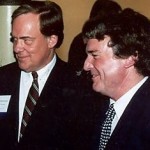
(2nd in a series of 3 tributes to Gordon Wetmore. 1st is here)
It's one thing to ask a friend to do you a favor. It's another thing to ask him for cold hard cash. But I was headed up the elevator again to Gordon Wetmore's cool studio to see if he would consider making an investment in a movie script venture I was working on.
I was also working on a documentary project, and maybe if he didn't bite on the feature film venture he might give me some cash for the documentary.
Gordon wasn't rich. He did pretty well. But he loved to tell about what every guy did when he had the casual conversation about his career.
"How much do you charge?"
"Oh, it averages around $20,000 per painting."
"How many portraits do you paint a year?"
"Oh, around 50."
Gordon then explained how the guy would pause and point his eyes toward his forehead while he quickly calculated.
"Happened every time," he laughed. "What they didn't understand is that the agent gets 40 percent, the tax man gets a huge chunk, and business expenses take another big slice." But he got such a kick out of watching each and every guy fantasize about getting into portraiture.
Gordon Wetmore was born and raised in Memphis. He was the oldest of his mother's several children from two men: Gordon's father, who died young, and Gordon's stepfather.
His mother was apparently something of a character and is likely where he got much of his aplomb. He gave me one anecdote about her when she was in her 80's, I believe. She had been taking piano lessons for a while and decided to put on a performance and sent out formal invitations. To Gordon's shock, a huge crowd arrived, and his mother, dressed to the nines, performed like she was 20.
As a young man, Gordon moved to Chattanooga, attended the university in town, and
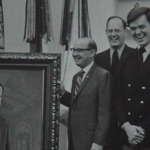
worked as a part time youth pastor at First Presbyterian Church, allowing him to make acquaintance with the town's prominent families early on, not a bad idea for a budding portrait artist.
He actually moved to to the area as Gordon Street, using the surname of his stepfather. Wisely, he changed it back to Wetmore, as senior Chattanoogans will remember that one of the city's most prominent citizens—the owner of Wheland Foundry—was also named Gordon Street.
For a while, Gordon Wetmore served as the artist for one of the local TV stations back when television was just getting going. He would draw for them as they commented on various topics, something similar to those court scenario drawings you see for cases where cameras are not allowed.
Then he got into portraiture. He told me he tried to quit on two different occasions, and actually did for awhile. During one interim he was a school teacher. But somehow he got back into the art world, a great blessing for him and the rest of us.
Gordon married Connie. He was a longtime bachelor but was finally smitten by this gentrified Brooklander with several generations of sophistication. Gordon never doubted that Connie's class was a key to his success in the art world.
Gordon was a devoted husband. He never spoke a bad word about her. Gordon knew all my dirt, and when the fraternity of men or sorority of girls gets together to compare notes, you tend to get the lowdown. He simply loved his wife and their three daughters—Amy, Alexandra, and Abigail.
So Gordon, a great family man with a house on Signal Mountain and three beautiful kids, wasn't necessarily in a position to write big checks. You hate to risk a friendship and ask a guy for money, but that's what I was determined to do.
What I had going for me is that Gordon had created a legacy for helping others reach success in their careers, just as he had. The blurbs on Facebook after his death recounted scores, as many as a hundred stories of people whom Gordon had helped, encouraged, and advised in their quest toward artistic success.
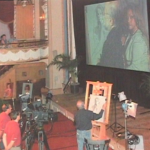
This natural inclination of Gordon's eventually led to his becoming Founding Chairman of the Portrait Society of America, the largest of its kind in the world. He was still chairman when he died. With over 3,000 members today, a large portion of that group meets annually to observe and learn from the greatest portrait artists in the world.
It wasn't easy, Gordon told me. We talked about the process. I had started a couple of non-profits myself. One succeeded, one failed. The failure had to do with bickering among the board members. A contentious person here, a prima donna there, and before you know it the thing collapses. Gordon loved to hear me recount the tale. He had a boat load of similar stories. His first crack at founding a portrait society also failed.
Now, the deck was stacked against Gordon from the beginning. Artists are the opposite of association-corporation types. It's like herding cats. It speaks to Gordon's tremendous gifts of diplomacy that he could gather together some of the world's greatest artists in his second attempt at a portrait society and grow it into the world's largest.
Gordon's stories fascinated me. I ended up accepting his offer to attend one of their national conferences. I went to several over the years. It was truly a thing of beauty to see artists acting more like a flock of birds than a herd of cats, offering advice, encouraging one another. No doubt the chief model for this behavior was Gordon himself. The real key, besides his superb sense of grace and tact, was his willingness to not be first. Gordon was not the guy up front giving exhibitions. He pushed for the other great artists to be front and center, while he watched and took notes on how to become a better artist himself.
This trait of being a unifier, a diplomat, a man who loved any and all—who wanted everyone together in one spirit—is the flip side of Gordon's second great dimension/contradiction. Great unifiers usually shy away from strong beliefs religiously and politically. Such staunch commitments tend to divide. But those who knew Gordon well understood that his bottom line Christian beliefs were non-negotiable. Bible believing, literal translation, the fundamentals? You bet.
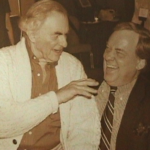
Politically, he was deeply conservative. He homeschooled all his kids and was quite comfortable in that culture. He worked in Barry Goldwater's campaign in 1964. Several of his friends were Birchers. But I doubt anybody in his international circle of friends and acquaintances knew much about all that. Close friends and board members of the society were people of other religions, and others sported any number of political ideologies. He didn't just tolerate these folks. He loved them dearly. His faith was not in your face. All those bite-sized eulogies of Gordon on Facebook only referred to him as a "great Christian gentleman." Because he was.
Gordon's intense Christian beliefs may have been most pronounced, ironically, when the time came to appropriately denounce and divide. At least two of the artists who messed up his first attempt at a portrait society found their way back into Gordon's successful second venture over time—because Gordon was soft-hearted and forgiving. He did not return evil with evil.
Well, such a good hearted man ought to be good for some kind of a check, I was hoping, when I brought him a cup of coffee from Greyriar's and sat down on his couch to ask about investing in my movie idea. (Of course, movie ideas have got to be one of the most ridiculous investments of all time, but whatever.) Anyway, I gave him a choice.
"Would you like to invest x-dollars in the feature film venture or x-dollars in the documentary idea?"
He told me he would think about it.
A few minutes later, he went back to his office to write a check.
"Here you go," he said. "I'm investing in both." I got double what I asked for.
And that kind of attitude is why Gordon has 100 Facebook tributes. Counting me, 101.
(2nd in a series of three tributes).
A Man's Contradiction is his Genius
I was headed up the elevator for the umpteenth time, this trip to ask my celebrated artist friend to do me a tacky favor. I wasn't sure how it would be received.
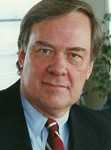
Gordon Wetmore had painted portraits of some of the world's most famous people. Richard Nixon, Princess Grace, Norman Vincent Peale. A long list.
A portrait artist is a sole proprietor, a businessman, a risk-taker. You must have talent, as Gordon clearly did. But that is not enough. You must also be a promoter, a salesman, and great at customer service. Gordon was all of these.
He and I connected on the level of being self-employed. The risk aspect, the freedom, the thrill of the reward, the loneliness of having no regular colleagues—we could relate to it all. That last factor was why we both enjoyed getting together so often and catching up. I was running my own news publication when we met in the late 90's hanging out at Greyfriar's coffeeshop downtown at Jack's Alley. Because we worked our own hours, we might find ourselves at Greyfriar's at various times during the day.
I was bringing in one-tenth of his kind of revenue with my investigative reporting enterprise distributed by fax machine. It was all the news that's not fit to print, and Gordon loved reading it. But was he willing to be associated with it? I would find out when I asked him the question I came to deliver that day.
I don't remember our first conversation, but I'm sure it was excellent, because Gordon was a fantastic conversationalist, perhaps the best I've ever known. It doesn't take enormous talent to be a great conversationalist, just great discipline and self-control. Gordon, simply, made it his point to actually be interested in you. He would ask you questions about yourself. Now, a lot of people do that. But Gordon would take it that one step further, a level most people never reach. He would actually be interested in your answer and continue to ask follow up questions until the matter was satisfactorily completed.
Now, I admit it does take a certain amount of talent to be a great conversationalist. You also must have something to say in return. Gordon did. He had fascinating stories to tell and all kinds of insights on life and interesting questions to ponder. But the trick is balance. Gordon never got so caught up in his own interesting material to fail to bounce the ball back to the other person in an appropriate amount of time.
Ironically, Gordon would often chastise himself aloud for talking too much about himself. The truth is, he rarely did. His awareness of the possibility belied his commitment to listening to others first.

So it was time to head up to his studio and ask the question. With two cups of coffee in hand (my ritual whenever visiting him), I pushed the button for the tenth floor of the Chattanooga Bank Building on Broad and 8th Streets. Gordon's office/studio was one floor above the tenth by stairwell. He called it the "Penthouse,"—he always had this touch of class that wasn't too flashy. This 2,000 square foot space at the top of the building had a view of the Aquarium, downtown, and river on one side and a view of Lookout Mountain on the other. A door to the outside allowed you to enjoy the view from a small veranda. Several of his pieces from his books Ireland and The Holy Land graced the walls. Two or three giant easels with portraits in various stages sat in the corners of the studio.
Gordon always manned the back corner and was usually working there when I would pop in, always unannounced. He wouldn't just be willing to stop work and talk with me. He always greeted me with the utmost enthusiasm, a gleam in his eye, and a compliment about my person quickly to follow. This was one of Gordon's great qualities. I'd like to think it was a lot about me, but when others popped in while I was with him, he exhibited that same warm, gracious, affirming manner. With Gordon, people always trumped productivity.
According to dramatists, a great character is determined by a person's dimensions. Dimensions are basically contradictions. Gordon had a few. For instance, there was how he treated Andrew, another of our friends from the coffee shop. Andrew was a caricature artist, tall, with a face that he admitted looks like a caricature itself. At this point in life, Andrew was basically a drifter, thirty years Gordon's junior, and completely out of Gordon's league in terms of income, accomplishments, and notoriety.
But Gordon was fascinated with Andrew. Andrew had a fantastic, innate ability to garner a likeness when he drew his caricatures. (Here's Andrew's caricature of himself.) He could do it starting at age five. Gordon said getting a likeness was a great mystery. He didn't know quite how he did it with his portraits, but he knew when he got a good one.
Of course, Gordon was great at getting a likeness as well. They were both great at it, but that is where this contradiction/dimension of Gordon's kicks in. He easily could have felt competitive toward Andrew. He could have scoffed at him for being a lowly sidewalk caricature man. Instead, he admired the heck out of him and told him so.
But it wasn't just with artists. Of his many traits, I've concluded Gordon's greatest attribute was his willingness to learn. At age 70, he was not just interested, he was downright thirsty for new insights and new ideas. He listened intently and carefully to young and old, sophisticated and common, to add to his accomplishments. Yet, he could have chosen decades earlier to rest on his laurels.
We sat down on his two sofas in the studio, enjoyed some coffee, and had another great Gordon Wetmore conversation. I was ready to ask the question. For my news publication, I always reprinted a national cartoon on the front page. People loved it. But my slant was local, and I wanted to create local lampoons.
"Gordon, would you consider drawing cartoons for my publication?"
It was pretty much assumed I couldn't pay him anything. He thought about it for a minute.
"You know, I get $25,000, sometimes even $50,000, for my signature at the bottom of a drawing," he said. He then noted that I was a fairly controversial figure around town. I had just sued the mayor for failure to disclose public records.
But Gordon loved the truth, and he loved to have fun. He grinned.
"I'll try it," he said. "But you'll just get my initials at the bottom."
That was the first of several hundred cartoons we conspired on together over several years. For the love of a laugh, he put his reputation on the line. But it all worked out. Eventually, the publication grew more respectable, and the city got a new mayor, Bob Corker, who ended up as our U.S. Senator. When Gordon and I published a book of all our local lampoons, Corker himself wrote the foreword.
When I found out last week Gordon had died, I got the news from Andrew. We had both been following the sudden illness on Facebook, but he got the final word before I did and called me from New Orleans where he now lives with his new family. Andrew is devoted to Gordon and to his memory. Like me, he was sad and shocked. Like me, he loved Gordon, because Gordon loved him.
I will write more about Gordon on Wednesday and Thursday.
It takes a genius to herd cats, I mean artists (2nd of 3)Saying Goodbye to a Great Man (3rd of 3)
Gordon Wetmore















